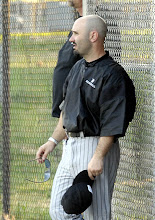Constructionism can be introduced to students in so many ways. Dr. Orey states how important it is to let kids construct something. Students will learn more if they are engaged and involved with the learning (Laureate Ed., 2009). This week's graduate assignment dealt with generating and testing hypothesis. Adding these strategies put students into educational issues. Instead of the teacher having sole control of the lesson, students create decisions and educated guesses to discover an end result. Students must then put their minds into the trenches to see where it takes them. When students generate and test hypothesis, they apply their minds with the present content to get a better understand of the content (Pitler, Hubbell, Kuhn, Malenoski, 2007).
When a teacher can take these instructional strategies and add technology to the classroom, then you have added an extra benefit to student learning. Adding computer programs can aide in this learning process. One technological tool would be the use of spreadsheets. Spreadsheets can gather data, allowing student more time to problem solving skills. This allows Mrs. Omar to set up a lesson on learning about compound interest in her 5th grade class. Students form small groups to decide how they can make the most money between 3 plans (Pitler, et al., 2007). Students today like to make their own decisions and choices and see where it will lead them. This lesson is not only a lesson in economics, but it is a benefit to students when they get into the real world. It is like having a financial planner make a visit into the classroom, but here kids get to see it right in front of their eyes. They can see how interest adds up and see if they made the right decision in the the beginning.
Web Resources that include these strategies also correlate with constructionism. In one high school class, Mr. McDivitt uses a History Multiplayer Strategy Game for a better understanding of World War. Students take on the role as leader of a country making decisions on diplomacy, economics, and military moves. They are trying to do what is right for their country. Mr. McDivitt found this technological approach had better results than a traditional approach. He said the students had more enthusiasm and they were heard talking and discussing their strategies and maneuvers in the hallways (Pitler, et al., 2007). Students in this class don't just hear about how countries operate, but they actually call the shots.
Anytime students are encouraged to step in and have a stake in your classroom, it correlates with constructionism. Mr. DcDivitt says that his students take responsibility for their country and they get to live history. They feel it is way better than reading about it. I think when students construct something, then you will see responsibility and a sense of caring. Even if their decisions are not correct, better learning will take place. An investment in something makes things stick. Decision making also builds leadership skills, which is another asset to students in the outside world.
Laureate Education, Inc. (Executive Producer). (2009). Bridging learning theory, instruction, and technology. Baltimore: Author.
Pitler, H., Hubbell, E., Kuhn, M., & Malenoski, K. (2007). Using technology with classroom instruction that works. Alexandria, VA: ASCD.
http://www.seriousgamessource.com/features/feature_051606.php
Subscribe to:
Post Comments (Atom)




I also thought Mr.McDivitt approach was interesting. It meets all the criteria for constructionism. Having his students step into the role of the leader not only makes understanding clearer but, it shape future leaders and wise decision makers. yolette
ReplyDeleteIn class we talk about the president and his many (hats) duties. The president has to take on up to 7 roles some days. My students learn this and we try to construct power points and mini-booklets to share these tasks. Mr. McDivitt's approach to leadership is pretty cool. He puts the leadership right in the hands of his students. It reminds me of the old board game called, Risk. Students are in control, and their decisions lead to success and failure. However, the video prgram teaches and kids grow from heir experiences. They learn how important a leaders job is, and it is not easy.
ReplyDeleteJay
I like the way that you said that students make their own decisions and choices about how they learn. This is very true. We sometimes have to take a step back in order to make students feel that hey have more contro in their education, especially at the secondary level. Josh
ReplyDeleteJay,
ReplyDeleteI, too, like Mr. McDivitt's website about the better understanding of World War. I agree that when students are able to take ownership for their curriculum decisions in the classroom, more effort and knowledge in gone into that. In return, students will try more and feel, from their decisions, great accomplishment.
-Amy